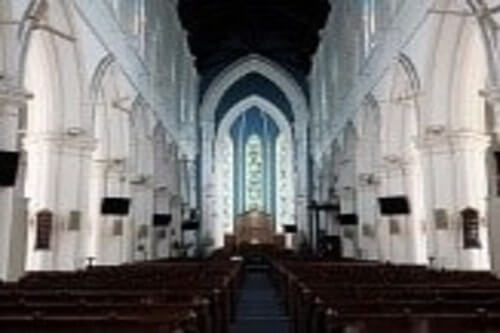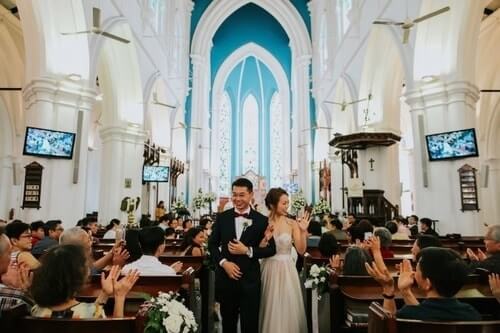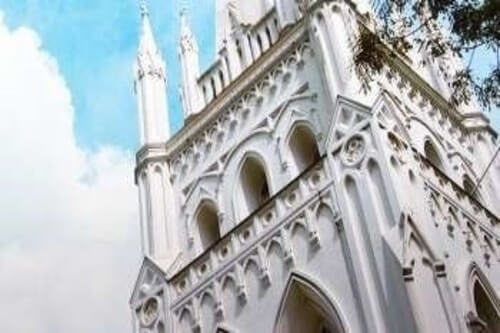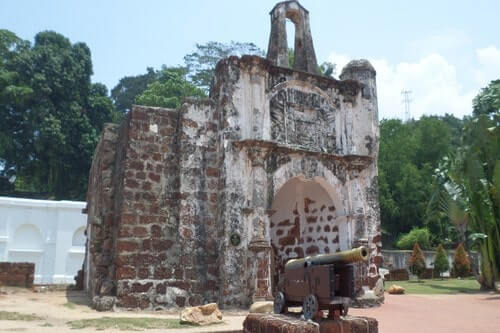

Saint Andrew’s Cathedral church of singapore is an Anglican cathedral in Singapore, the biggest cathedral in the country. It is in the vicinity of City Hall, MRT Interchange in Downtown Core, in the central business district of Singapore. It is the Anglican Diocese’s Cathedral Church of Singapore and its 27 parishes ‘ mother church and more than 55 congregations. Since 1836, there has been a church on the site, but the current church was built in 1856–61. The Cathedral logo is the Cross of St Andrew. 2006 numbered the 150th anniversary of the Church Mission of St Andrew, which began in 1856.
History,St andrew’s cathedral
In his Town Plan of 1822, Sir Stamford Raffles assigned a piece of land between Hill Street and North Bridge Road for the location of an Anglican church, but building of the church did not start until the community raised funds in 1834. After the patron saint of Scotland, the church was named Saint Andrew in honor of the Scottish group that donated to the construction fund.
First Church, St andrew’s cathedral
George Drumgoole Coleman built the first Saint Andrew’s Church in the neo-classical style. On November 9, 1835, the foundation stone was laid and the building was built in 1836. The first service of the church was performed by the first chaplain, Reverend Edmund White, on 18 June 1837, and the church was consecrated by Bishop Daniel Wilson of Calcutta on 10 September 1838.
John Turnbull Thomson added a spire in 1842 after complaints that the church resembled a “Town Hall a College or an Assembly Room.” However, the spire was constructed without the installation of a lightning conductor, and in 1845 and 1849 the church endured two lightning strikes.
Then, in 1852, it was proclaimed unsafe and closed, and then destroyed in 1855. The church had a church bell called the Revere Bell, named after the wife of American Consul Joseph Balestier, Mrs. Maria Revere Balestier, who gave it in 1843.
Second Church,St andrew’s cathedral
Building a second church of singapore church was launched by William Butterworth, then Governor of the Straits Settlements. The new church was intended in the Gothic Revival style by Colonel Ronald MacPherson, the executive engineer and superintendent of prisoners.
Originally, the tower was intended to be twice the height of the constructed tower and without a spire, but it was discovered during the building that the basis could not support such a heavy structure and instead used a lighter spire.
The scheme was also streamlined to make it easier for the Indian convict workers to build in early Singapore to build. John Bennet was the construction engineer in charge. After MacPherson was transferred to Malacca, Major John F. A. McNair, John Bennett and W supervised the completion of the building. D. Bayliss.

The foundation stone was laid on March 4, 1856 by Rt Rev. Dr. Daniel Wilson, Lord Bishop of Calcutta, and the building was completed in 1861. On October 1, 1861, the first service took place. On January 25, 1862, Dr. George Cotton, who succeeded Bishop Wilson, was honored to consecrate the church. The Mission of Saint Andrew was launched on June 25, 1856, and the church launched the first Anglican evangelical outreach in Singapore.

Consecration as Cathedral Church,St andrew’s cathedral

The church was moved to the Diocese of Labuan and Sarawak from the Diocese of Calcutta in 1869. In 1870, it was consecrated by Archdeacon John Alleyne Beckles as the United Diocese Cathedral Church. In 1889, the Revere Bell was substituted by a bell chime. The Revere Bell is presently located in Singapore’s National Museum. The Cathedral is owned by the Singapore Diocese Synod and the Right Reverend J, the first Anglican bishop.
Named Ferguson-Davie in 1909. The cathedral served as an emergency hospital in 1942, soon before the united of Singapore to the Japanese. In 1952 a Memorial Hall was added devoted to those who died in World War II. The cathedral’s north and south transepts were initially constructed as carriage porches. Both transepts were expanded to provide halls, meeting rooms and offices–1952’s North Transept, 1983’s South Transept.
On 28 June 1973, the Cathedral of Saint Andrew was published as a national monument. The fresh expansion of the Cathedral A project to extend the building was launched in 2003. Before construction began, an archeological excavation was carried out on its premises by the National University of Singapore in 2004.
The extension was finished in November 2005, called the New Sanctuary Cathedral. For a gazetted national monument, it was mainly constructed underground to comply with conservation rules and characteristics a new worship hall within two subterranean levels of fresh floor room. church of singapore
A further study in 2018 discovered the tower to be completely sound and could resist the ringing of change. In November of that year, the bells were removed from the tower for tuning and cleaning. There will be 14 bells in the fresh peal, a peal of twelve and two semitones. John Taylor & Co will also do this work.

Architecture Church, St andrew’s cathedral

Designed in a Neo-Gothic architectural style, the current cathedral was completed with Madras chunam. It is said that the architect MacPherson drew inspiration from Netley Abbey, a ruined 13th-century church in Hampshire, England, for elements of the design. The Saint Andrew’s nave piers strongly resemble the remaining Netley piers.
Three stained glass windows in the apse are devoted to three figures in the early colonial history of Singapore and depicted by their coats of arms on the windows.
The center window is dedicated to Sir Stamford Raffles, the left windows to John Crawfurd, Singapore’s first major resident, and the right windows to Major General William Butterworth, the governor who started building the second church building.
During World War II, however, the initial stained glass windows were destroyed. In the gray and red granite memorial monument surmounted by a Maltese cross in the ground and the stained glass window above the west gate, MacPherson is remembered.
Also in his honor, Jalan Klapa was renamed MacPherson Road. The West End gallery was not part of MacPherson’s plan, but added after the opening of the cathedral. It has the church’s only decorated components, with foliated pillars and pilasters, as well as crocked arches. church of singapore
Three objects in the Cathedral of Saint Andrew symbolize the Church’s belonging to England’s Anglican Communion and its loyalty to Canterbury’s global See. The Canterbury Stone was sent from the Cathedral of Canterbury in 1936, set in a pillar by the lectern and carrying a bronze replica of the Canterbury Cross.
On the column supporting the pulpit, the Coventry Cross is produced of three silver-plated iron nails from the Coventry Cathedral ruins of the 14th century demolished by bombing during World War II. The Coronation Carpet in the Chapel of the Epiphany comes from the rug used in the Westminster Abbey Coronation of Queen Elizabeth II.
How to go to JBCC with our private taxi service?
We provides a private taxi as your transport to JB because it is very convenient and comfortable. Check out our affordable price here! Travel from Singapore to Johor Bahru now to enjoy your day with our private taxi service. What are you waiting for? Let’s book now with hassle free private taxi Johor Bahru service from JB2SG!
Contact by Phone/Whatsapp: 012-7883383
Contact by Email: kenny@smartouch.com.sg









124 thoughts on “Most Popular Visit st andrew’s cathedral places located in Singapore”
Comments are closed.